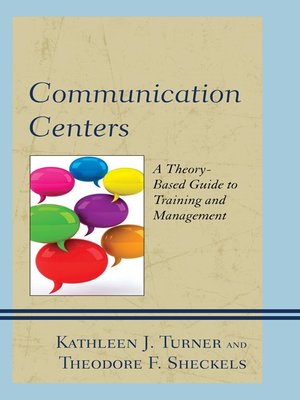
Sign up to save your library
With an OverDrive account, you can save your favorite libraries for at-a-glance information about availability. Find out more about OverDrive accounts.
Find this title in Libby, the library reading app by OverDrive.



Search for a digital library with this title
Title found at these libraries:
| Library Name | Distance |
|---|---|
| Loading... |
Communication Centers: A Theory-Based Guide to Training and Management offers advice based on extant research and best practices to both faculty who are asked to develop a communication center and for directors of established centers. Broken into easily understood parts, Turner and Sheckels begin with the development of communication centers, offering guidance on the history of centers, how to start a center, and, in a contribution by Kyle Love, creative approaches to marketing.
They provide a communication perspective on selecting and training tutors, and then address how to train the tutors in their tasks of helping students with invention, disposition, style, memory, and delivery as well as presentation aids, including consideration of special situations and diverse populations. The authors explore ways to broaden the vision for communication centers, and conclude with chapters on techniques for assessment by Marlene Preston and on the rich rhetorical roots of communication centers by Linda Hobgood. The volume concludes with appendixes on guidelines for directors and for certification of tutor training programs.
Communication Centers is a valuable resource for scholars in any stage of developing or improving a communication center at their university.
They provide a communication perspective on selecting and training tutors, and then address how to train the tutors in their tasks of helping students with invention, disposition, style, memory, and delivery as well as presentation aids, including consideration of special situations and diverse populations. The authors explore ways to broaden the vision for communication centers, and conclude with chapters on techniques for assessment by Marlene Preston and on the rich rhetorical roots of communication centers by Linda Hobgood. The volume concludes with appendixes on guidelines for directors and for certification of tutor training programs.
Communication Centers is a valuable resource for scholars in any stage of developing or improving a communication center at their university.







